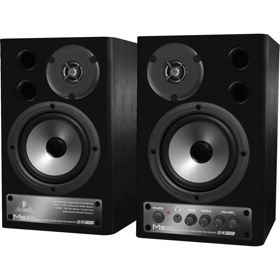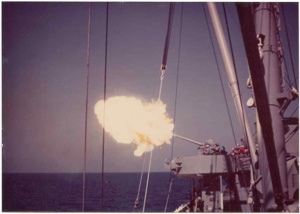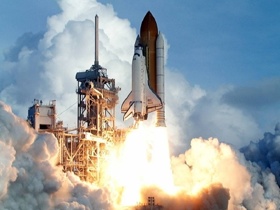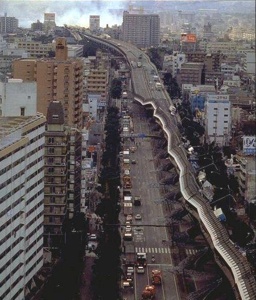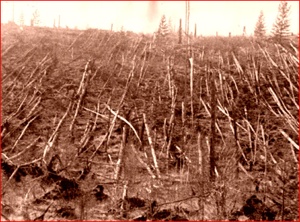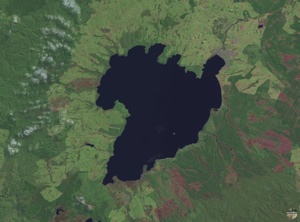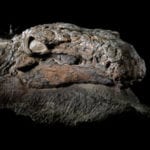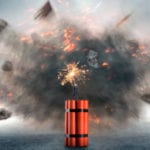10 Concert Speakers
A 400,000 Wat rock concert or a similar set of speakers mounted in a vehicle can reach ear-splitting decibel levels. Is it any reason most promoters recommend you wear ear protection to stave off the 135-145 decibel sound waves?
9 Howler Monkeys
Found swinging in the trees of the Central and South America rainforests, it’s hard to believe that such small animals can make a sound that’s the combination of an air-raid siren and a heavy-metal guitar solo. Howler monkeys have what’s called a hyoid bone in their throats that has evolved to become a large resonating chamber to amplify their roars. These roars have clocked in at 140 decibels at the source. Why do they howl like this? Only the males howl and use it to let other howlers know their location and to defend their territory, as well as possibly for mate-guarding. According to the Guinness Book of World Records, their vocalizations can be heard by humans up to 3 miles away. Though not typically heard up close, fireworks are still explosions and are very loud. The sound heard from the sky is pretty loud, though not damaging, but at the bursting point, the decibel levels reach a staggering 145-150. Even tests are performed under strict soundproofing to avoid any ear injury.
8 Gunfire
Gunfire for anyone unfortunate enough to be standing near it can be quite damaging to the ears registering at a quite loud 145-155 decibels. This is the very reason why you should always wear ear protection when on a firing range.
7 NHRA Dragsters
Sitting next to a dragster as it fires up its engines and screams down the raceway can be more than just loud; it can be damaging to your entire body. At the 155-160 Decibel range, not only will it severely to permanently damage your hearing, but it also vibrates your vision and makes it temporarily difficult to swallow. That’s why no one stands next to them.
6 Space Shuttle Launch
When the rockets fire, it is wise and, in fact, fully enforced that you stand at least a half-mile away lest you get inundated by 165-170 decibels of painful sound. Unlike many other loud noises, the shuttle rocket sound is constant as it creates the thrust necessary to lift it from the ground.
5 Blue Whale
Blue whales mostly emit very loud, highly structured, repetitive low-frequency rumbling sounds that can travel for many miles underwater. These songs may be used to communicate with other blue whales, especially to attract and find mates. The call of the blue whale reaches levels up to 188 decibels. This extraordinarily loud whistle can be heard for hundreds of miles underwater. The whale is the loudest and largest animal on earth.
4 Krakatoa Volcano
The 1883 Krakatoa eruption ejected more than 25 cubic kilometers of rock, ash, and pumice. It generated the loudest sound historically reported at 180 Decibels: the cataclysmic explosion was distinctly heard as far away as Perth in Australia approx. 1,930 miles (3,110 km), and the island of Rodrigues near Mauritius approx. 3,000 miles (5,000 km).
3 1-Ton TNT Bomb
Standing as close as 250 feet away from the impact, the resulting explosion from a 1-ton bomb creates a decibel count of 210. Without sufficient hearing protection, not to mention a complete sound-resistant bunker surrounding you, you could quite literally die from the intense vibrations that would literally shake you apart. Unless, of course, you were under the bomb.
2 5.0 Richter Scale Earthquake
A sufficient enough quake to rend the ground in twain and destroy buildings, whole rock, and human life reaches a decibel level of 235. If you are caught in the epicenter and are unlucky enough not to be above the ground in a plane or helicopter, the intense noise and vibrations could kill you long before death by any falling object.
1 Tunguska Meteor
The Tunguska event was a massive explosion near the Podkamennaya (Under Rock) Tunguska River in Krasnoyarsk Krai of Russia, at 7:40 AM on June 30, 1908. The explosion was most likely caused by the air burst of a large meteoroid or comet fragment at an altitude of 5 to 10 kilometers (3–6 mi) above Earth’s surface. It was measured with the similar impact of a 1000-Mega-ton bomb with a decibel rating of 300-315. This is often considered to be the loudest single event in history.
+ Lake Taupo Eruption
Lake Taupo is a large lake in the middle of the North Island of New Zealand. The lake is the caldera that resulted from a massive volcanic eruption in 180 AD. It is New Zealand’s largest eruption in 20,000 years. It ejected around 120 cubic kilometers of material, of which 30 cubic kilometers were ejected in the space of a few minutes. It is believed that the eruption column was 50 kilometers high, twice as high as the eruption column from Mount St. Helens in 1980. The resulting ash turned the sky red over Rome and China. This eruption was reportedly heard in China. Lake Taupo, today, is one of New Zealand’s popular tourist attractions for its beauty and swimming. The fact that the lake is the largest freshwater lake in Australasia and approximately the same size as Singapore ensures it is a huge ‘must do’ component to many tourists. Read More: Twitter Facebook YouTube Instagram
